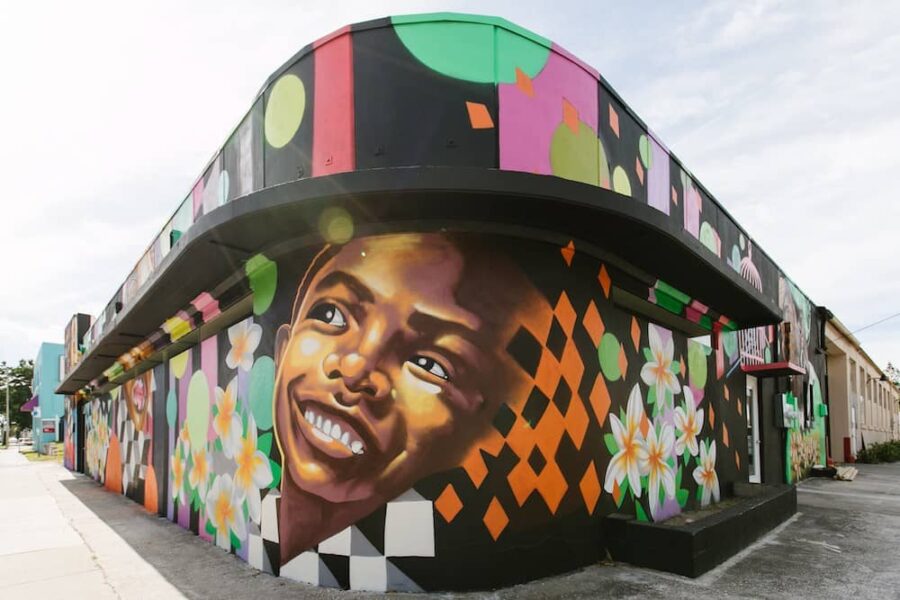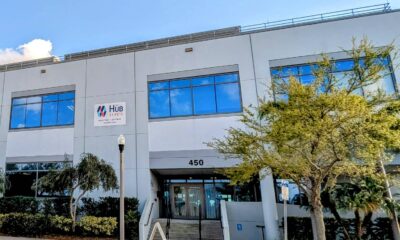Thrive
The Dali Museum, new ballpark could feature public art

St. Petersburg officials plan to increase where residents and visitors can view public art installations ahead of several prominent projects that will receive city funding.
Attorneys are attempting to clarify a chapter of the city code that requires a percentage of construction costs for municipally funded projects to benefit the Art in Public Places Fund. The stipulation extends to developments on privately owned property.
Sharon Michnowicz, assistant city attorney, explained the contradictory language to city council members at a Budget, Finance and Taxation Committee meeting Thursday. While the intent is to set money aside for public art at or adjacent to the municipally-funded project location, sections of the code suggest that officials can only place installations on city-owned property.
“Being able to put art where we would like to have it – no matter who owns the land – seems relatively simple, and that is the way I think it should be,” said Councilmember Copley Gerdes.
The code states that the city will retain ownership of art purchased through the Fund, regardless of where it is displayed. Gerdes also wants to ensure the works remain at the intended site.
Confusion remained despite attempts to clarify the code. A section notes that someone leasing city-owned land must expressly allow public installations at the site.
It then highlights the Dali Museum. Councilmember Ed Montanari was the first to ask why attorneys were “so specific with that entity.”
“What it was trying to say is that counts as city-owned property,” Michnowicz said. “Meaning that work could be displayed there also.”
Montanari noted that the area is an activity hub with the Dali Museum, the Mahaffey Theater, Al Lang Stadium and the annual Firestone Grand Prix of St. Petersburg. He said any changes would affect another entity.
Councilmember Lisset Hanewicz also questioned why attorneys highlighted the museum – which operates on city-owned land – if the code changes were to clarify that city officials could place art anywhere receiving public funding. Attorneys posited that lease terms could have influenced the previous decision and said they could provide additional details when the city council votes on the amendments.
Hanewicz then asked what initially spurred the decision to clarify the code. Tom Greene, assistant city administrator, credited plans to build a new $1.3 billion ballpark for the Tampa Bay Rays.
“If we build a stadium, and we want to do public art at the stadium, the county ownership of that land would present a challenge – with respect to the current drafting of the ordinance,” Green said.
After hearing the impetus for the amendments, Council Chair Deborah Figgs-Sanders asked administrators to list all affected developments that could now display public artworks. She said it would impact locations throughout the city, not just the Dali Museum.
The city subsidizes myriad endeavors, particularly affordable housing developments. For example, the Sugar Hill Group hopes to lease the much-maligned, city-owned Tangerine Plaza property for a mixed-use affordable housing development.
Pinellas County officials often purchase municipal land for housing projects to ensure affordability. If approved, the county will own the stadium property and lease it to the city, which will then sublease it to the Tampa Bay Rays.
Michnowicz said the legal team will attempt to further clarify and broaden the code language without mentioning the Dali Museum. Hanewicz said she supported sending the initiative to the full city council but asked administrators to better explain what spurred the changes.
“It would be better coming from staff – and a presentation,” she added. “As opposed to us actually figuring it out and asking the questions.”
The committee unanimously agreed to move the code changes forward. They did not set a date for a vote.








JAMES GILLESPIE
February 26, 2024at7:38 pm
public art should be authorized in a careful and selective manner. not all the huge paintings are impressive or inviting no matter the talent. certain pubic professional buildings on public land should be untouched. the heighth of absurdity in my opinion would be to cover any new stadium with such paintings.
Virginia Gentleman
February 24, 2024at6:04 pm
The St Petersburg Yacht Club is on City land. shall the City force them to install art?
Bayfront Orlando health may still be on a parcel of City Land, shall the City force them to install art?